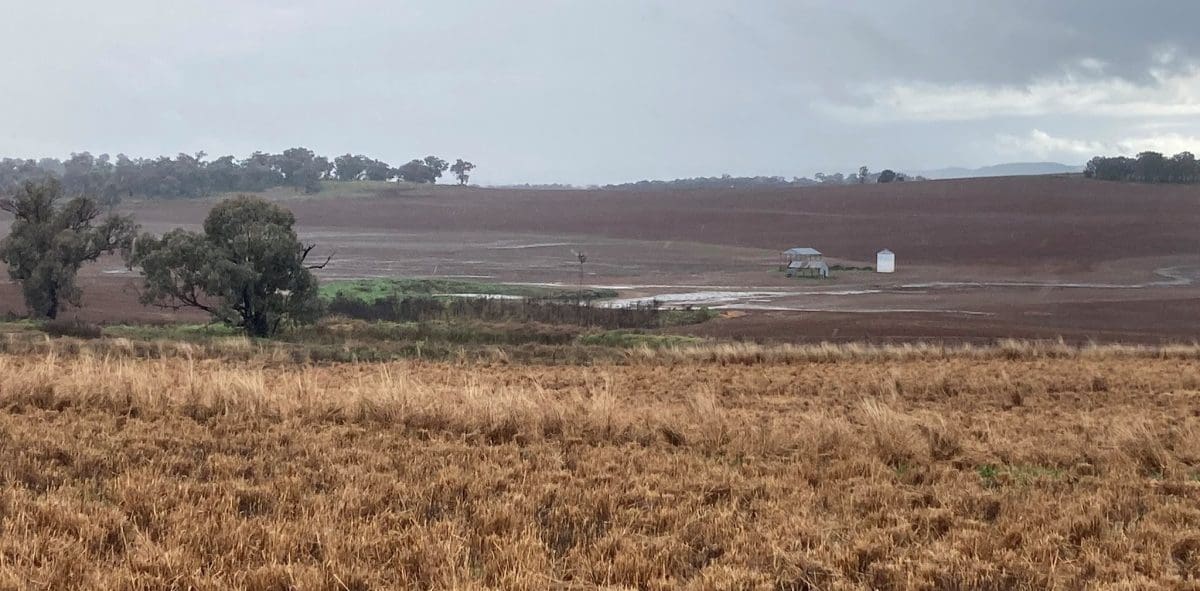
Excessively wet conditions in parts of central NSW have prevented all intended winter-crop area from being planted. Photo: Lawrence Balcomb
AUSTRALIAN grains and oilseeds are expected to continue to trade at above-average prices,
despite a recent softening in values for global agri commodities, Rabobank said in its monthly outlook released on Thursday.
In its July Australian Agribusiness Monthly, Rabobank said the S&P GSCI Agriculture Index, a key benchmark of global agricultural commodity market performance, lost more than 15 per cent during June.
That included a 20pc month-on-month price decline in Chicago Board of Trade (CBOT) wheat, and further substantial declines have been recorded into early July.
The drop in global agri commodity prices came as other asset classes also fell, triggered by interest-rate hikes, inflation concerns and “hawkish” commentary from central banks.
The report said price declines for grains and oilseeds were driven by significant selling by institutional funds, as well as this year’s Northern Hemisphere harvest beginning to hit the market.
Hopes had also lifted for the potential resumption of Ukrainian grain exports to the world market, with discussions around the opening of a trade corridor.
Meanwhile, there was also some easing in local prices seen across June for grains and oilseeds, cotton, sugar and also the Eastern Young Cattle Indicator.
However, despite local grains and oilseeds prices following global prices some of the way down over the past month, the global outlook continues to support a “summer of content” for local prices this year, the report said.
RaboResearch general manager for Australia and New Zealand Stefan Vogel said Rabobank continues to expect above-average global prices to remain for grains and oilseeds.

Stefan Vogel
However, it has marginally downgraded its forecast for CBOT wheat to US1050c per bushel over the next 12 months, down from 1080c seen previously.
“The resumption of Ukrainian exports is far from certain, and Northern Hemisphere weather risks are high, with heat wave and La Niña impacts in the US and Europe persisting,” Mr Vogel said.
In Australia, many growers are still battling to get crop planted due to wet conditions, especially in New South Wales and Queensland.
While several drier weeks in June have allowed an uptick in planting progress, central NSW has been impacted most severely in recent weeks by downpours.
Rabobank’s forecast for local wheat prices remains unchanged from its late May crop outlook, with the quarterly average Newcastle APW1 track price of A$428 per tonne expected to fall to $406/t by the October-December quarter.
The bank predicts a 25pc month-on-month fall in the global cotton price seen in June is not expected to be the end of price declines for the year, with consumer confidence in key markets signalling slower demand ahead.
Local prices of below A$600 a bale for cotton are now expected for quarter four this year.
For farm inputs, Mr Vogel said global fertiliser prices edged higher in June, but were still
lower than the highs seen in the first half of 2022, by 36pc for urea and 4pc for Muriate of Potash.
“Local prices are expected to face continued volatility over the next half year.”
However, Mr Vogel said chances for softening of nitrogen, phosphorus and potassium fertiliser prices
were seen later this year and in early 2023.
Source: Rabobank



HAVE YOUR SAY